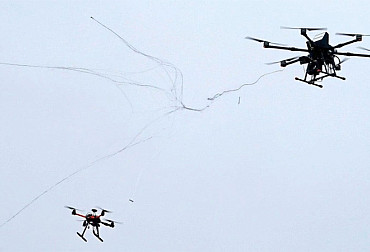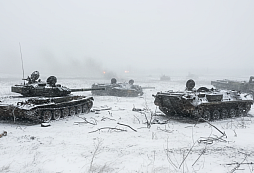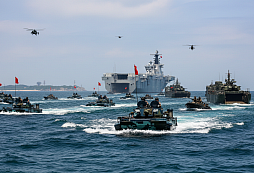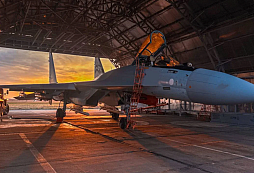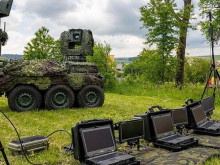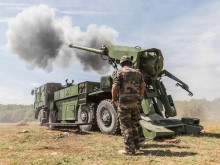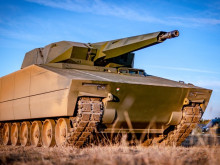New weapon turret for the Pandurs
Following the recent anniversary of ten years of the service of Pandur II CZ armored vehicles in the armament of the Army of the Czech Republic, several articles appeared in the media, focusing on possible modernizations of these vehicles. Among the most interesting materials there are articles in ATM magazines (3 and 4/2021). In these articles, most space is devoted to the issue of possible replacement of the existing, relatively obsolete turret, respectively RCWS-30 (Samson Mk I) weapon stations. The articles introduced some weapon stations which are considered for a possible use at Pandur II CZ wheeled IFV. This is probably the most complex material that has appeared in the Czech Republic.
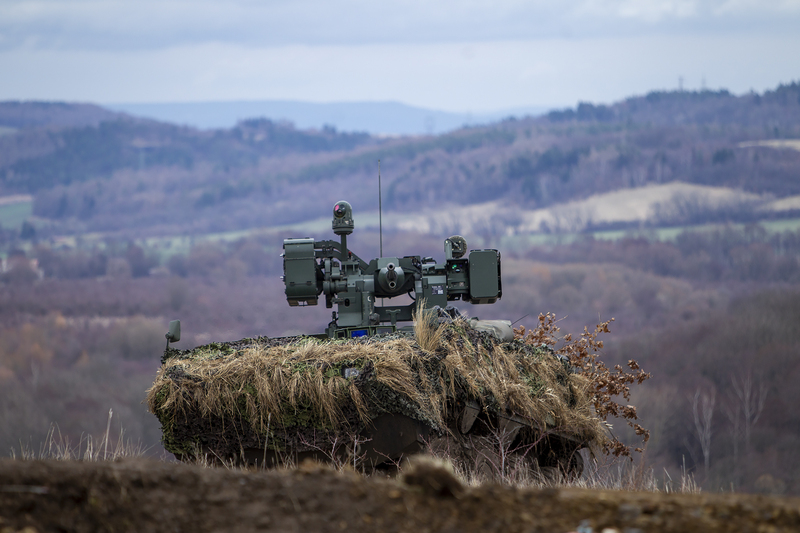
Picture: Following the recent anniversary of ten years of the service of Pandur II CZ armored vehicles in the armament of the Army of the Czech Republic, several articles appeared in the media, focusing on possible modernizations of these vehicles (illustration photo) | 4th Rapid Deployment Brigade / Ministry of Defense of the Czech Republic
RCWS-30 / Samson Mk I Weapon Station
First of all, it can be stated that the RCWS-30 weapon turret, mounted on Czech Pandur II CZ wheeled Infantry Fighting Vehicles, is really obsolete from today's point of view. Its main disadvantage is the absence of any armor protection. Perhaps an even greater disadvantage is the fact that it is necessary to leave the interior of the vehicle when reloading the magazine, while with more modern weapon stations it is possible to easily load the magazine from inside the vehicle. Above all, this element seems almost anachronistic at first glance, when the high vulnerability of the crew in the above-mentioned operation is obvious.
It should be noted here that such a concept of reloading, including the absence of armor protection was also common in other first-generation weapon stations, which includes the RCWS-30. The concept of the RCWS-30 weapon station simply corresponds to the time of its creation, ie the end of the 1990s. It is therefore pointless to compare it with current weapons stations.
In addition, the RCWS-30 weapon station had and still has a number of positive elements. The key advantage of the RCWS-30 weapon station was the Mk.44 Bushmaster II cannon itself. It is one of the most successful and also the most widespread in his category. Thanks to it, Czech Army was able to at least partially switch from the "eastern" 30x165 mm caliber, used for example in the 2A42 cannons of the BVP-2 vehicles, to the "western", more powerful 30x173 mm caliber. The great advantage of the RCWS-30 weapon station is also its low weight, amounting to only 1480 kg. The low weight factor is extremely important in the case of relatively light Pandurs, more important than, for example, in the much heavier Boxer Armored Personnel Carriers.
The main advantage of the RCWS-30 weapon station was, above all, its relatively low price. At that time, it was lower than the price of other weapons stations participating in the then Czech tender for armaments for the Pandur II CZ wheeled IFV. Nevertheless, the price of one turret reached more than 40 million crowns and thus significantly contributed to the seemingly high price of Czech Pandurs.
However, this seemingly high price of modern weapons stations is justified. Due to the fact that the weapon stations, in addition to the cannon itself, also contain observation devices, aiming devices, additional armament, etc., these represent the real "fist" of the vehicle, and thus fundamentally determine its combat value. Cockerill, one of the largest manufacturers of weapon stations, rightly claims in its advertising materials that without its turret, an armored vehicle is only an armored taxi. Although this statement is a bit simplistic, it is clear that this "fist" (turret with a fire control system) is very important. In the case of Armored Personnel Carriers, as with any modern technology, software and hardware are important. In addition, the conflicts of recent years have clearly shown the importance of firepower and the need for cannon armament for wheeled vehicles - therefore, wheeled Armored Personnel Carriers (such as Russian BTR vehicles, which also strengthened armament) turned into wheeled Infantry Fighting Vehicles.
It should also be noted that the then acquisition of Pandur II CZ vehicles was accompanied by political pressures for the lowest possible price. Therefore, the original number of ordered Pandur vehicles was gradually reduced to only 107 pieces (originally up to 234 pieces were planned, in the mid-1990s it was planned to purchase up to 600 pieces of Armored Personnel Carriers). Of course, one may ask whether this emphasis on the lowest possible price was really the best way. On the other hand, it can be stated that this approach was given by the overall approach of political representation to the issues of state defense, long-term low defense spending, and last but not least, the onset of the global economic crisis. The choice of a cheaper weapon station for the combat version of Pandur II CZ was therefore a logical step. In addition, other comparable stations that were offered at the time did not differ much from the RCWS-30 weapon station in terms of technical concept (absence of armor protection) and would therefore not bring any significant improvement. From this point of view, it can be stated that the choice of the RCWS-30 weapon station was a good, pragmatic step at the time of the purchase of the Czech Pandur II CZ vehicles. That is why it would be wrong to completely reject the RCWS-30 weapon station.
Does it make sense to replace the RCWS-30 weapon stations with a new weapon station?
If we are to answer this question, then it is necessary to realize that Pandur II CZ armored vehicles - even with their RCWS-30 weapons stations - have been used in the Czech Army for many years, successfully. It is a fact that in the beginning of his service, the Pandurs struggled with a relatively low combat capability. And it is also a fact that their lower level of combat capability was due to the RCWS-30 weapon stations, which had a high failure rate. Today, however, these mistakes have been eliminated, and the combat capability of the Pandurs and their weapons stations is at an incomparably higher level, corresponding to the level of other armies. It could be said that soldiers and army technicians have learned to perfectly control and treat Pandur II CZ armored vehicles and their RCWS-30 weapon stations.
It is important that the Pandur II CZ armored vehicles also proved themselves in combat conditions, during their deployment in Afghanistan. The RCWS-30 weapon stations themselves have also proved very useful there. The accuracy and reliability of the cannon were highly appreciated, as well as a very good overview of the battlefield. In this respect, possible more modern weapon stations usually do not bring any major improvement, which mainly concerns the already mentioned better protection. In addition, the existing RCWS-30 weapon stations can be upgraded using more modern software.
The fundamental problem, of course, remains the already mentioned, somewhat unfortunate, concept where you need to leave the interior of the vehicle when reloading the magazine, which of course brings a much higher probability of injury or death of the operator. The question then is, how likely is it that the Czech Pandurs will find themselves in a situation where it will be necessary to change the magazine during a combat situation? How likely is it to fire the entire magazine in a single combat operation? Experience from the deployment of Pandur II CZ armored personnel carriers in Afghanistan suggests that a smaller number of shots is sufficient for most operations. Current conflicts show that Infantry Fighting Vehicles, wheeled or tracked, require the ability to fire accurately rather than the role of a means of fire support (this is a task for other weapon systems). This is one of the reasons why armored vehicles now place such an emphasis on weapon station software, fire control systems, etc.
If we look at other modernization programs, then these are usually less ambitious. They usually concern only partial elements and not the system as such. They often focus only on software. Although radical modernizations are technically possible, they are often costly. It is a fact that, for example, the US military plans to modernize its Stryker armored personnel carriers with the new Protector MTC-30 weapon station. However, this is a replacement for the original large-caliber machine guns due to the need to increase firepower. On the other hand, we rarely come across programs in which a weapon station with cannon armament would be replaced by another weapon station (unless we count the replacement of conventional crew turrets by weapon stations due to weight and space savings).
In addition, the financial factor comes into play. As already mentioned, modern weapon stations, such as the aforementioned Protector MTC-30 weapon stations, are more powerful and offer both armored protection and the possibility of reloading the weapon from the vehicle. At the same time, however, they are significantly more expensive, much more expensive than RCWS-30 turrets. If the path of modernization of all Czech Pandur II CZ wheeled IFVs and replacement of all RCWS-30 weapon stations were followed, then it would mean costs in the amount of several billion (it is not possible to count only the price of turrets, it is necessary to count the price of work, etc.). At the same time, it would be pointless to modernize, resp. to install a new weapon station, only for a part of the Czech Pandurs, eg only one battalion, and thus operate two types of weapon station simultaneously on one type of vehicle. Such a solution would be very demanding and expensive, especially from a logistical point of view. It is a fact that some armies have taken such a step and are operating several weapons stations at the same time. An example is the planned Spanish purchase of Piranha 5 wheeled armored vehicles, which will be equipped with two types of weapon stations using an automatic cannon. However, such solutions are more suitable for larger armies, operating large numbers of armored vehicles. In the case of the Czech Army, which has only a relatively small number of Pandur II CZ armored vehicles, this solution would not be very suitable.
In the case of the Czech Army, it is also necessary to add the fact that it would have no use for the existing RCWS-30 weapons stations, taken down during the possible modernization of the Pandurs. At the same time, it is common abroad that older weapon stations, acquired as part of modernizations, are subsequently installed on some other, less powerful vehicles. However, Czech Army does not have vehicles that would be eligible for installation with RCWS-30 weapons stations removed from the Pandur Armored Personnel Carriers. The only vehicles that are technically possible for the RCWS-30 weapon station are really only Pandurs in the Czech Army. The Army would thus store the RCWS-30 turrets (which still have sufficient technical life and can serve for many years) in warehouses.
The modernization should also be proportional to the total price of the Pandurs. The Ministry of Defense is currently facing a lack of funds, which it also needs for other acquisition programs (acquisition of tracked IFVs, purchase of new tanks, etc.), so the fact should be taken into account in the possible modernization of the Pandurs.
So does it make sense to modernize the Czech Pandur Armored Personnel Carriers? Definitely yes. Such modernization programs are quite common and allow to maintain the combat capability of the vehicles in full. It is not enough to be satisfied only with overhauls and it is therefore necessary to proceed to a complete modernization. For example, it would be very appropriate to buy new anti-tank missiles, respectively new versions of Spike-LR anti-tank missiles with higher range. Such a modernization step would significantly increase the combat capabilities of the Pandurs - without any intervention in the construction of the weapon station.
















